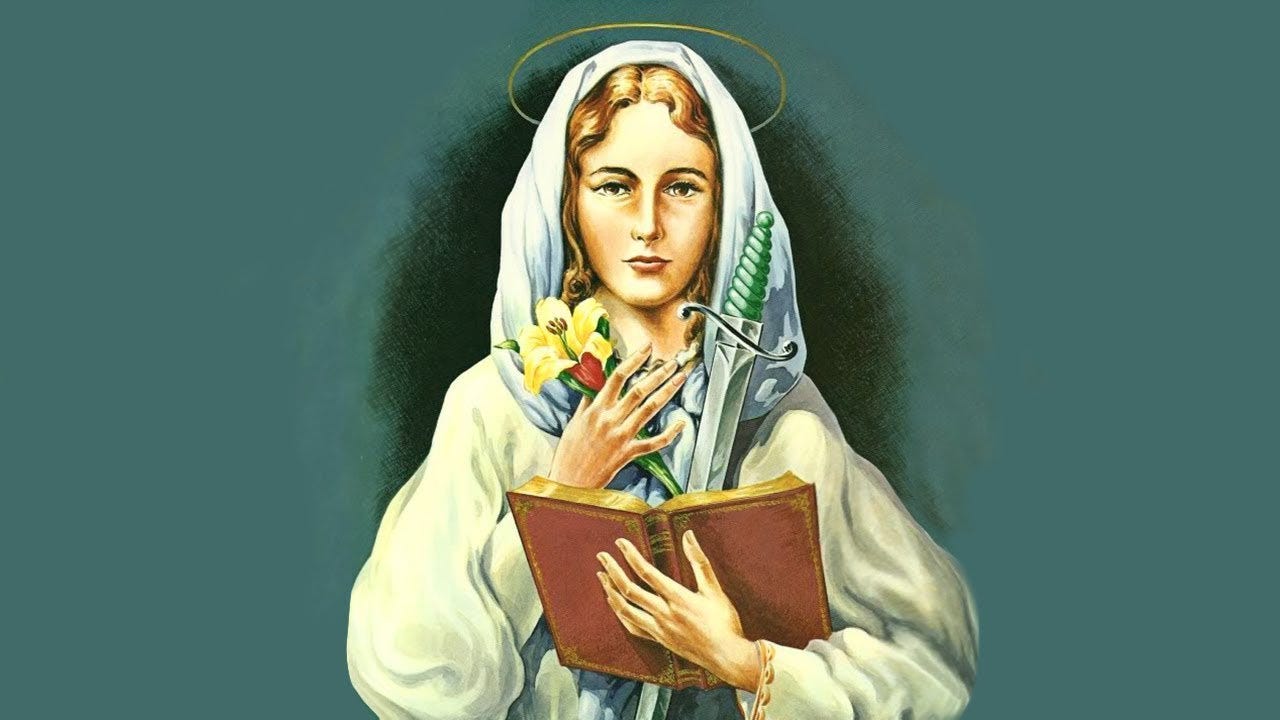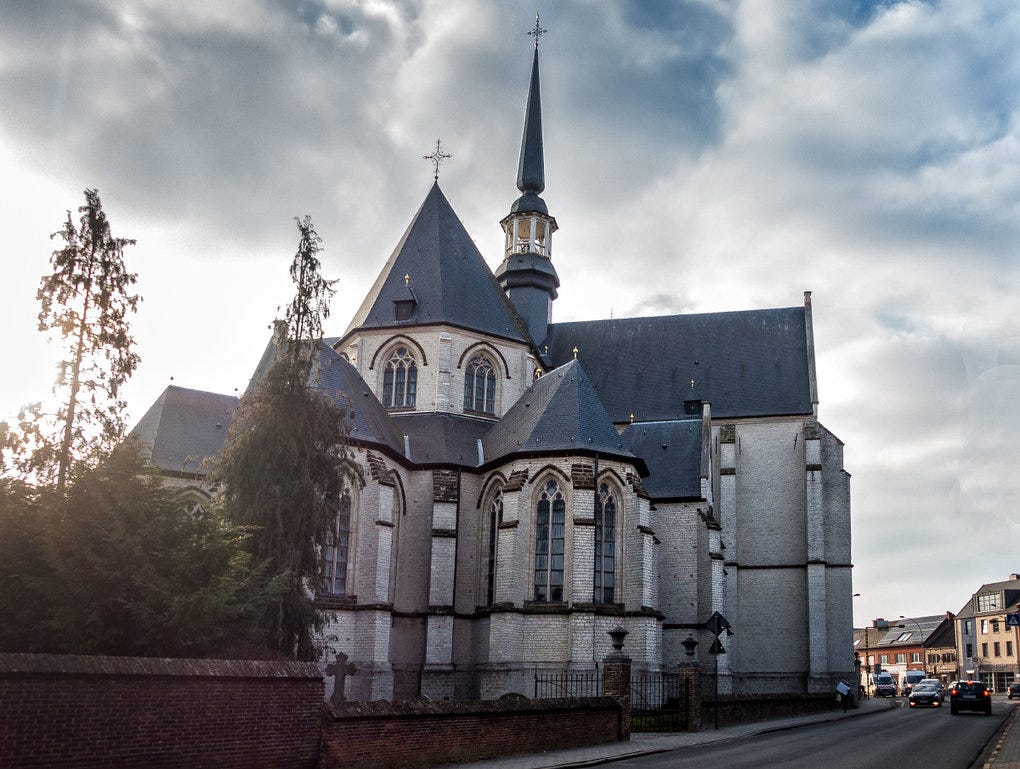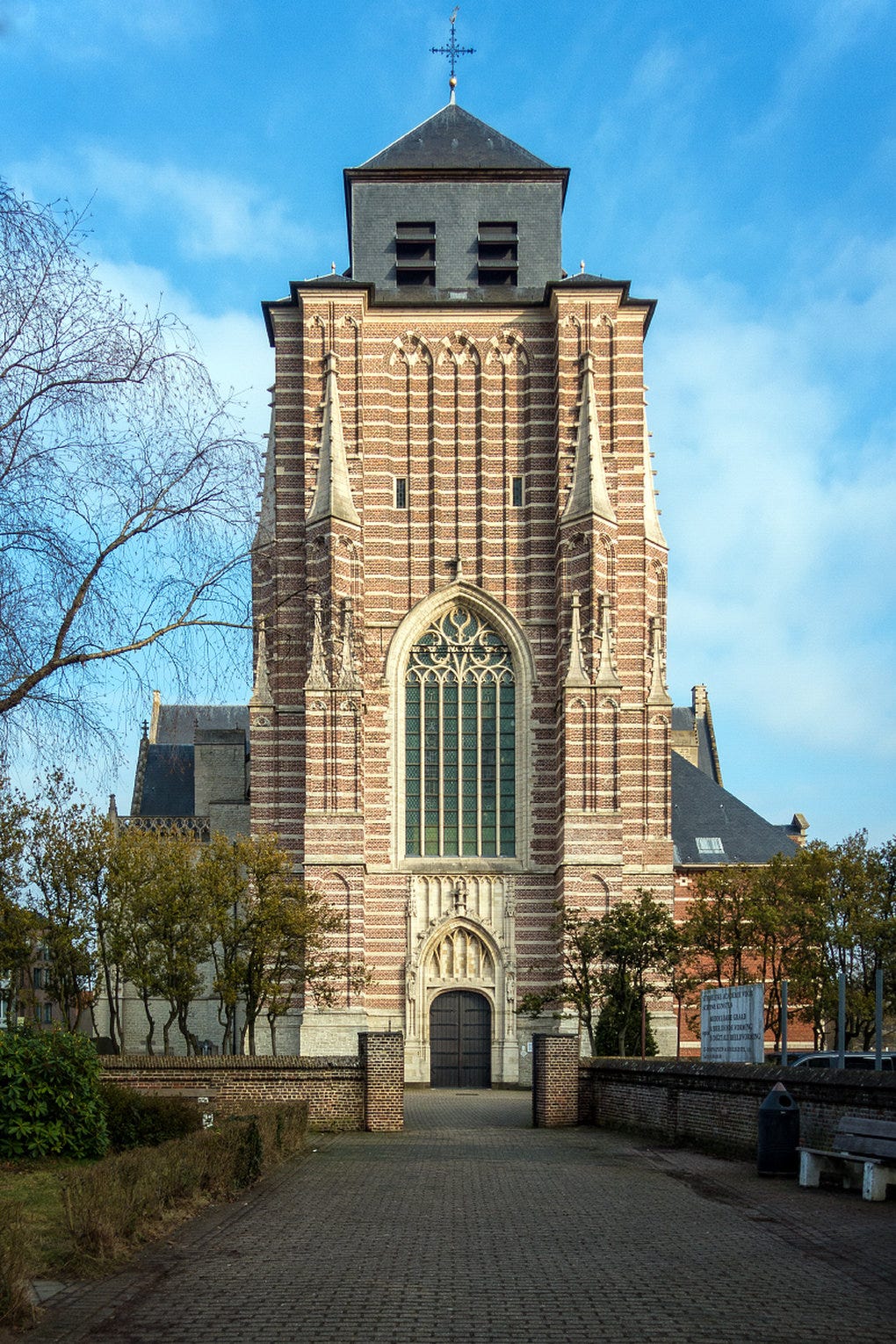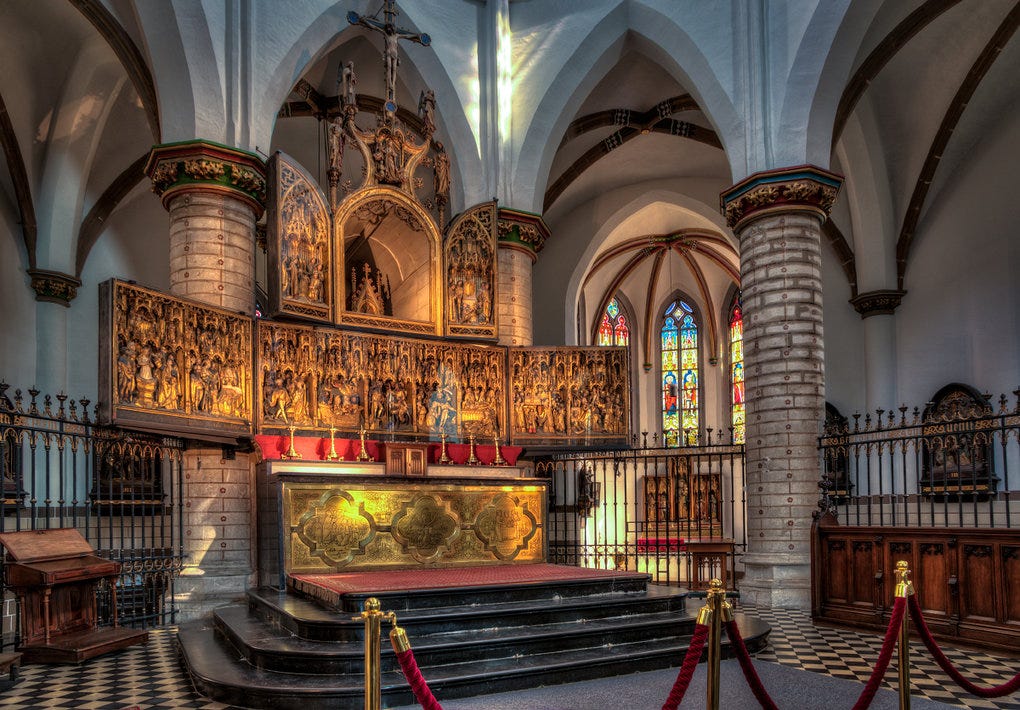Good Day! I pray you have been in good spirits, at least once or twice in the last week, and God has granted you peace, even in your sufferings. Today we are looking at the story of St. Dymphna, a 7th Century princess in Ireland. She inspired a tradition of psychological home care in Belgium that continues to this day.
Little of her story is properly recorded, much of it is based on folklore. Some details change between stories but there is a consistent thread. I have stuck to the agreed upon details here, as I do not have the time or knowledge to question historical and anthropological work.
The earliest recorded hagiography is a church canon from the 13th century. The author has stated it is from mostly oral traditions. However, the lasting effects of St. Dymhna in the area and the records of the Church burning down offer some solid historical evidence as well.
St. Dymphna is theorized to be the same person historically as St. Dahmnait of Tydavnet. This led to Tydavnet and Geel being designated twins in 1992.
St. Dymphna and King Damon
Dymphna was born in Ireland sometime in the 7th century to a pagan King, Damon, and his devout Christian wife. Dymphna’s mother passed early in her life, and her father became despondent. His mental health deteriorated exponentially. His pagan servants told him to remarry, and he agreed. He would remarry so long as a woman as beautiful as his late wife was procured for him.
His servants sent people all across the land, searching high and low for a woman of the same beauty and stature. They came home empty handed. The King was inconsolable, and heartily rejected the evil suggestion of his servants; marriage to his daughter, Dymphna. She was approaching age 15, and they pressed the King further. His mental health, having taken the toll it had, failed him, (I wonder if he was inspiration for Tolkien’s Steward of Gondor). He looked upon Dymphna and no longer saw his daughter but could only see his late wife.
He bid her marry him, and she refused. He went into a rage, and to avoid his wrath Dymphna fled her Castle with her confessor, Fr. Gerebran. They also took two trusted servants and the King’s Fool along with them the stories say. Fleeing Ireland they settled in what is now Belgium in a town called Geel. They were a short distance away from a shrine to St. Martin of Tours.
Dymphna constructed a hospital. Her aid of the poor and sick led her father’s spies to discover her use of the wealth she brought with her. He traveled to her and ordered her to marry him. Dymphna refused. King Damon ordered his servants to kill Fr. Gerebran and Dymphna. They severed Gerebran’s head from his body, but none did touch Dymphna.
King Damon once again entreated Dymphna to marriage, and when she refused, he became so enraged he drew his own sword and removed her head. Dymphna died there at only 15 years of age, faithful to her consecration.
The Aftermath and Legacy
King Damon left, the village folk collected the bodies of the priest and Dymphna, having grown fond of her care for the people, and laid them to rest in a cave. The Church of St. Dymphna rests upon this burial site to this day.
A church was constructed in her honor, and by 1480, it housed so many pilgrims in seek of treatment for their mental ills, it was expanded. Overflowing again, the locals began taking in those in need of treatment and caring for them at home. This tradition continues to this day in the area.
The original church burned down in the 15th century, The Church of St. Dymphna erected in replacement in 1532. Miracles have been abundant, proven to take place at her shrine inside of the church. Her remains are stored in a silver reliquary there, some of her remains were also moved to her shrine in the United States.
Fr. Gerebran was also Sainted by the church and his remains are now in Xanten, Germany.
St. Dymphna was canonized in 1247 and is the patron of those suffering nervous and mental afflictions as well as victims of incest. Her feast day is May 15th, only five days away!
Learning from the Life of St. Dymphna
What can we take away from the sorrowful story of St. Dymphna? Her tragedy rivals those of Shakespeare. Yet, there is a primary lesson with which we can better our pursuit of Jesus Christ.
Self-Sacrifice
It is quite evident that St. Dymphna took some of the Kingdom’s wealth with her. She began to build a lot of infrastructure when settling in Geel. This spending is also how her father’s spies found out where she was hiding from him. St. Dymphna was more concerned for caring for those in need then she was for her own safety.
St. Dymphna focused on helping those who needed treatment of mental afflictions. The tradition of the Church built in her honor, housing those in need and caring for them in a home, is continuing to this day. Psychological institutions still look at this phenomenon, curious if it may be a better way forward.
“Sacrifice is the basis of community”—Dr. Jordan B. Peterson
One persons self-sacrificing action led to a centuries long tradition of sacrificing ones time, possessions, and money to care for others.
Please pray for me that I might be given the strength to imitate the Saints who are an imitation of Christ, and such shall I pray for you. Go in peace, and God Bless You
References
Catholic Saint Medals. https://catholicsaintmedals.com/saints/st-dymphna/
Loyola Press. https://www.loyolapress.com/catholic-resources/saints/saints-stories-for-all-ages/saint-dymphna/
The General Order of Franciscan Mission Associates. https://franciscanmissionassoc.org/prayer-requests/devotional-saints/st-dymphna/the-story-of-st-dymphna/
Britannica. https://www.britannica.com/biography/Saint-Dymphna’
Catholic Online. https://www.catholic.org/saints/saint.php?saint_id=222
Pints with Aquinas. https://mattfradd.locals.com/post/5610491/jordan-peterson-interview
Visit Geel. https://www.visit-geel.be/en/the-church-of-st-dymphna
Today’s Catholic. https://todayscatholic.org/st-dymphna-patron-saint-of-mental-health/






